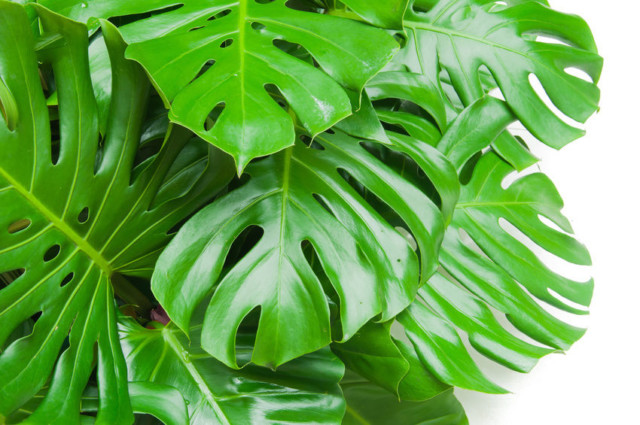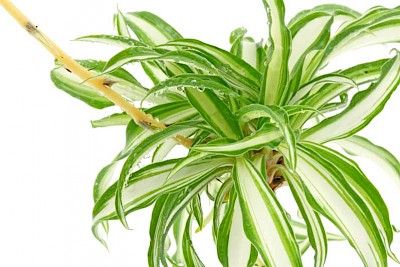Air Quality in your New or Newly Renovated Home
There's a hidden culprit when I inspect houses in the Lower Mainland and Surrey. Especially when they are newly renovated, or newly built. Inspectors don't carry the devices to monitor them, but there's one strong indication that there's trouble. And the strange thing is — the indication is one that most people like. That new house (or new car) smell.
THAT NEW HOUSE SMELL MIGHT BE HURTING YOU!
One sure path to energy efficiency in houses is eliminating air leaks. If you cut down the amount of air that has to be heated and cooled, you cut your utility bill substantially. But plugging up all those air leaks means less fresh air inside and this has brought on other problems - especially in new homes!
Volatile Organic Compounds — (VOC) compounds are used in the manufacture of the many synthetic building products used in most new houses today, including carpeting, flooring, paint, cabinetry, countertops, and the structural framework itself.
One of the most common VOC's found in new construction is formaldehyde. It is a potent eye and nose irritant and causes respiratory effects.
What to do?
Opening up the windows and turning on fans for as little as two days can help, but continuing to do this over weeks can help.
If you haven't moved in yet, one of the safest methods to remove the smell of formaldehyde is to “cook” it out. Keep your heat in your house/apartment/condo to 85f or higher for 24 hours to as long as few days. You haven't any furniture or bedding in the place, so the formaldehyde will be encouraged to leave its solid environment and "gas off". Do this for 24 hours, (with all windows closed and fans off) and then after 24 hours, open all windows and turn on all fans to remove the formaldehyde from the air.
Renovating? Think about using low or no VOC paint.
Typical household paint contains up to 10,000 chemicals, of which 300 are known toxins and 150 have been linked to cancer. Some of the most harmful chemicals found in paint are VOCs. These chemicals aren't something you want to spray on your body or potentially even keep inside your house. As paint dries, these harmful VOCs are released into the air at high levels. Indoor VOC levels are routinely 10 times higher than outdoor levels, and up to 1,000 times higher immediately after painting.
So, when making a choice in renovating and paint types, don't get as excited about that new color as much as the non-VOC rating. All the local paint manufacturers that I've researched offer it, but they are more expensive. You should always use the lowest-VOC paint possible and the fewer VOCs there are, the better it is for you, the homeowner, and the environment in general. We used Benjamin Moore's AURA line when we last renovated. The paint has stood up well over the last two years, and it's non-VOC.
Those perfumed air fresheners are not your friend!
Over the last years, health evidence against plug-in and spray air fresheners has been mounting. Many emit chemicals and ultra-fine particulates that aren’t identified on the label. Some also contain terpene, a fragrant chemical that’s widely found in natural substances, such as pine resins.
But when confined inside a house, terpenes react with naturally occurring ozone in the air and form compounds that have long-term effects on the respiratory system (asthma, for example).
The alternative? Keep a clean house, use environmentally friendly cleaners, and get a whiff of pine scent while taking a nice long walk outside.
Take a tip from my mother-in-law. When she did whole-house cleaning, she'd open all the windows and doors and the entire house would be fresh and clean.
Flooring
Eco-flooring used to be a rarity, but these days, there's some great solutions that are low VOC or VOC-free. New carpeting often has a lot of gassing of to do. Through time, keeping them clean and free of dust, animal dander and dirt helps to keep your home's environment clean. We recommend a local carpet cleaning company that uses environmentally friendly practices. https://www.facebook.com/ultrasheencarpet/ They are a family run business.
Houseplants can be your air-care super heroes!
Back in my youth, our house was full of houseplants. We found that it actually did make a big difference in the home. Many (most) people smoked tobacco in those days, and the Boston ferns and spiderplants were a welcome addition to our place. These days there aren't any smokers, (and we have less houseplants) but here's some information I found, that can freshen up your air, naturally.
It’s not new news that houseplants are beautiful little workhorses when it comes to human health. Among their many benefits is one decidedly impressive one – they remove toxins from the air. And this isn’t just "woo-woo" mumbo-jumbo. NASA, given their interest in improving air-quality in sealed environments, has researched this extensively and concluded: “Both plant leaves and roots are utilized in removing trace levels of toxic vapors from inside tightly sealed buildings. Low levels of chemicals such as carbon monoxide and formaldehyde can be removed from indoor environments by plant leaves alone."
They found that certain plants are better at removing specific compounds from the air – this is especially meaningful for indoor air, as studies have shown that interior air can have three to five times more pollutants than outside.
 TOP PLANTS FOR AIR QUALITY:
TOP PLANTS FOR AIR QUALITY:
Jade plant, spider plant, bromeliad, Caribbean tree cactus, and the Dracaena.
They found that all of the plants were good at removing acetone, but the dracaena plant took up the most, around 94 percent of the chemical. The bromeliad plant was great at removing six of the eight VOCs, taking up more than 80 percent of each over a 12-hour sampling period. Likewise, the jade plant was very good for toluene.
These healthy, green friends the best way to help keep your homes air clean — naturally.


